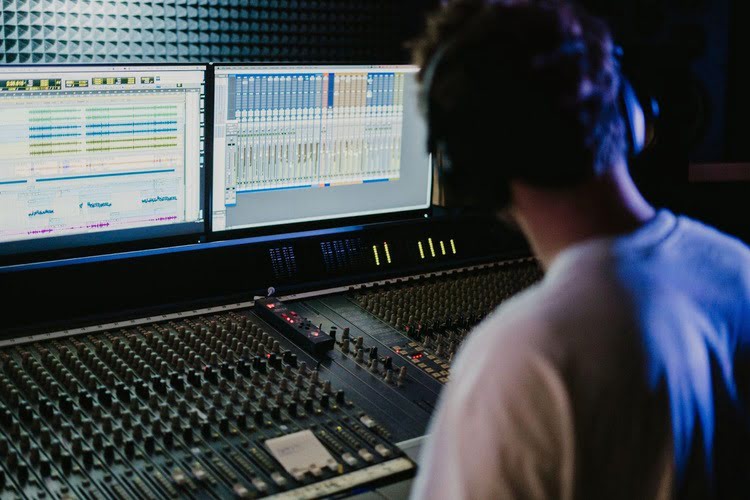Different Kinds of Studio Monitors
Music production can be difficult to master as you fiddle with different music genres to expand your experience. It can be especially frustrating when you mix one track perfectly on your favorite monitor, only to sound completely different with another monitor.
A very likely reason is how different music genres affect monitoring in general; this guide will further elaborate on this.
Types of Music Monitors
Quality monitoring is crucial for producing quality music and avoiding poorly tuned noise. Every sound produced passes through your monitors and high-quality studio speakers.
Every album, track, beat, etc., would go through your monitors for you to edit, cut, and listen through for the right mix of edits to create your preferred sound and product.
Thus monitors can be broken down as the following:
Passive Monitors
These monitors may seem less costly and simpler than their active variants, but they require an external power amp and a built-in passive crossover. Their speakers and amplifiers function as microphones and preamps which can be matched to a specific monitor for each listener.
Amps are chosen for their sound quality, reliability, and silent operation. Their non-powered analog crossovers direct their low frequencies to the woofer and high frequencies to the tweeter.
Powered Monitors
Powered monitors are very similar to passive monitors but have within them built-in amplifiers to power the drivers through a built-in high-level crossover.
You can manufacture a convenient matched speaker and amp system with built-in equalization options and connector types for easy interfacing through the amplifier and crossover.
Active Monitors
Active monitors contain active crossovers and a dedicated amplifier within each speaker in the cabinet while needing a dedicated amplifier for each driver.
This setup allows for precise analog and digital active crossover design for the most optimized frequency response.
Active monitors utilizing DSP now have simpler designs, and modern technology makes them more affordable for those on a budget. These monitors also have onboard equalization; user presets, and streamlined connection options for easy interfacing for your studio, even for mobile setups with 2 cables. However, we should warn you that active mobile designs cannot mix and match components but can be used anywhere.
Monitor Positioning
Nearfield Monitors are designed to be close to the listening position so the speakers can avoid producing interference and inaccuracies from early room reflections.
These monitors are also the most affordable but produce weaker bass response due to their small size and are best for rooms of similar size.
Midfield Monitors are placed behind the desk and up to 4 meters away from the listener while offering extended dynamic range and low-frequency response.
These kinds of monitors work best in larger acoustically treated rooms but may exacerbate acoustic issues such as room reflections.
Far Field Monitors, also known as “Mains” or “Bigs”, are often built into the control room front-facing wall for high-end pro studios as they are large, loud, and very expensive for the integrated acoustic systems. These monitors are primarily used for mastering tracks due to their ability to check the low end of a mix as most engineers rely more on near or mid-field for mixes.
Two-Way vs. Three-Way Designs
Two-Way designs have 2 kinds of drivers built-in; a woofer for low frequencies and a tweeter for high frequencies. On the other hand, Three-Way designs have two crossovers that add another kind of driver of a Two-Way driver, a dedicated midrange driver for higher sound pressure level, lower distortion and extended lo-fi.
However, Three-Way designs are generally more expensive than their Two-Way counterparts due to requiring more components and their complex design. The Three-Way design is also suitable for achieving a balanced frequency response in a mixing room that is too small for midfield monitors
We should also note that an individually well-designed Two-Way design can out-compete a Three-Way for the budget-conscious as our recommendation for buying.
Components of Studio Monitors
Beyond the whole of a studio monitor, the individual parts of a studio monitor are another factor to consider when buying your monitor.
Driver Size
The woofer’s sheer size correlates to their abilities to produce sound, such as how large drivers with an extended bass response can produce a louder output. Some monitors also use multiple smaller woofers to produce a balanced critical mid-range frequency response. However, the sensitivity of the driver can also affect its overall loudness.
Cabinet Types
The design of the cage surrounding the speaker affects a monitor’s frequency response output level.
Most woofers utilize a cone design for better bass response and improved output, all done by pushing and pulling air into sound waves. Still, take note that the sound pressure generated by the drive is what produces that sound.
These cone designs are further divided into 3 designs:
Sealed enclosures
Sealed enclosures are airtight seals that completely isolate the rear of the driver.
These kinds of cabinets offer excellent transient response and are often smaller than ported designs, but the lo-fi of sealed enclosures tends to be at a higher frequency than ported designs.
Ported enclosures
Ported enclosures are also called bass reflex designs; they have an open port or a tube for releasing air from within the unit.
They may exhibit a slight resonance around the frequency and have unique challenges in terms of design and construction.
Passive radiator designs
These cabinets use a membrane instead of a port to improve their lo-fi extension. However, the extra driver has a voice coil and removed magnet for creating a passive radiator system, but they are more expensive than ported systems.
Subwoofers
This is a supplement for engineers used to reach HZ below 50 for mixing bass-heavy music genres such as heavy metal or post-production audio. However, they can be used in other music genres and applications too, like live sound reinforcement.
Frequently Asked Questions(FAQ)
Here are some tidbits as you continue using monitors.
What Am I Looking for In My Monitors?
As your ideal monitor can be a very personal matter, you can narrow your choice with the following factors:
Power: Power doesn’t only apply to volume, but the range of sounds produced
Driver: The materials making up your speaker matter as they help produce sound
Input types: So you know if your other equipment can fit with each other
Cabinet type: Made of sturdy material to be the best output and radiators for low-end reproduction.
Size: There would be dramatic changes in monitor functionality with incremental increases, such as how Farfields are meant for mastering.
Weight: You would be carrying and positioning them in the first place.
Cost: The best kinds that serve your needs and keep your budget
Side Note: When auditioning monitors, we recommend listening to a familiar track that shows a wide range so you can see which monitors accurately play the track at all dimensions.
Other Side Note: Other factors that can affect your monitor’s performance are frequency response, distortion, and directivity.
Why Do Sound Engineers Need 2 Monitors?
Two monitors are necessary for producing more 3-dimensional sound for reproducing stereo-quality audio to achieve stereo sound reproduction.
Professional audio engineers need multiple monitors to listen to their tracks for mistakes at different production phases, such as using a larger far-view during mastering.
Do I Need A Separate Subwoofer?
It all depends on what kind of music you are working for, as subwoofers are meant for anything with high bass and for being listened to by multiple people, perfect for theaters and club music (even though it can be used for other music genres too).
Using a subwoofer in a small room meant for a few people might lead to sound inaccuracies as smaller rooms don’t have enough space to develop the bass frequencies, but it can be mitigated through proper room treatment and calibration.
Conclusion
The link between the music genre’s frequency and monitor type has a strong correlation. The best monitor fits the number of people listening to the music.







